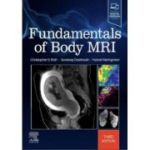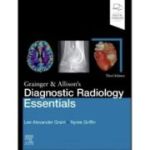Handbook of Medical Image Processing and Analysis

Price: 651,00 lei
Availability: in supplier's stock
Author: Isaac Bankman
ISBN: 978-0-12-373904-9
Publisher: Academic Press
Publishing Year: 2009
Edition: 2
Pages: 1000 pages 604 ills
Category: RADIOLOGY & DIAGNOSTIC IMAGING
DESCRIPTION
# Includes contributions from internationally renowned authors from leading institutions
# NEW! 35 of 56 chapters have been revised and updated. Additionally, five new chapters have been added on important topics incluling Nonlinear 3D Boundary Detection, Adaptive Algorithms for Cancer Cytological Diagnosis, Dynamic Mammogram Retrieval from Web-Based Image Libraries, Imaging and Communication in Health Informatics and Tumor Growth Modeling in Oncological Image Analysis.
# Provides a complete collection of algorithms in computer processing of medical images
# Contains over 60 pages of stunning, four-color images
Related Titles
* Handbook of Medical Imaging : Processing and Analysis Management
Description
The Handbook of Medical Image Processing and Analysis is a comprehensive compilation of concepts and techniques used for processing and analyzing medical images after they have been generated or digitized. The Handbook is organized into six sections that relate to the main functions: enhancement, segmentation, quantification, registration, visualization, and compression, storage and communication.
The second edition is extensively revised and updated throughout, reflecting new technology and research, and includes new chapters on: higher order statistics for tissue segmentation; tumor growth modeling in oncological image analysis; analysis of cell nuclear features in fluorescence microscopy images; imaging and communication in medical and public health informatics; and dynamic mammogram retrieval from web-based image libraries.
For those looking to explore advanced concepts and access essential information, this second edition of Handbook of Medical Image Processing and Analysis is an invaluable resource. It remains the most complete single volume reference for biomedical engineers, researchers, professionals and those working in medical imaging and medical image processing.
Dr. Isaac N. Bankman is the supervisor of a group that specializes on imaging, laser and sensor systems, modeling, algorithms and testing at the Johns Hopkins University Applied Physics Laboratory. He received his BSc degree in Electrical Engineering from Bogazici University, Turkey, in 1977, the MSc degree in Electronics from University of Wales, Britain, in 1979, and a PhD in Biomedical Engineering from the Israel Institute of Technology, Israel, in 1985. He is a member of SPIE.
Table of Contents
ENHANCEMENT Introduction 1. Fundamental Enhancement Techniques 2. Adaptive Image Filtering 3. Enhancement by Multiscale Nonlinear Operators 4. Medical Image Enhancement with Hybrid Filters SEGMENTATION Introduction 5. Overview and Fundamentals of Medical Image Segmentation 6. Image Segmentation by Fuzzy Clustering: Methods and Issues 7. Segmentation with Neural Networks 8. Deformable Models 9. Shape Information in Deformable Models 10. Gradient Vector Flow Deformable Models 11. Fully Automated Hybrid Segmentation of the Brain 12. Unsupervised Tissue Classification 13. Partial Volume Segmentation with Voxel Histograms 14. Higher Order Statistics for Tissue Segmentation QUANTIFICATION Introduction 15. Two-dimensional Shape and Texture Quantification 16. Texture Analysis in Three Dimensions for Tissue Characterization 17. Computational Neuroanatomy Using Shape Transformations 18. Tumor Growth Modeling in Oncological Image Analysis 19. Arterial Tree Morphometry 20. Image-Based Computational Biomechanics of the Musculoskeletal System 21. Three-Dimensional Bone Angle Quantification 22. Database Selection and Feature Extraction for Neural Networks 23. Quantitative Image Analysis for Estimation of Breast Cancer Risk 24. Classification of Breast Lesions in Mammograms 25. Quantitative Analysis of Cardiac Function 26. Image Processing and Analysis in Tagged Cardiac MRI 27. Analysis of Cell Nuclear Features in Fluorescence Microscopy Images 28. Image Interpolation and Resampling REGISTRATION Introduction 29. Physical Basis of Spatial Distortions in Magnetic Resonance Images 30. Physical and Biological Bases of Spatial Distortions in PET Images 31. Biological Underpinnings of Anatomic Consistency and Variability in the Human Brain 32. Spatial Transformation Models 33. Validation of Registration Accuracy 34. Landmark-based Registration Using Features Identified through Differential Geometry 35. Image Registration Using Chamfer Matching 36. Within-Modality Registration Using Intensity-Based Cost Functions 37. Across-Modality Registration Using Intensity-Based Cost Functions 38. Talairach Space as a Tool for Intersubject Standardization in the Brain 39. Warping Strategies for Intersubject Registration 40. Optimizing the Resampling of Registered Images 41. Clinical Applications of Image Registration 42. Registration for Image-Guided Surgery 43. Image Registration and the Construction of Multidimensional Brain Atlases VISUALIZATION Introduction 44. Visualization Pathways in Biomedicine 45. Three-Dimensional Visualization in Medicine and Biology 46. Volume Visualization in Medicine 47. Fast Isosurface Extraction Methods for Large Image Data Sets 48. Computer Processing Methods for Virtual Endoscopy COMPRESSION STORAGE AND COMMUNICATION Introduction 49. Fundamentals and Standards of Compression and Communication 50. Medical Image Archive and Retrieval 51. Image Standardization in PACS 52. Imaging and Communication in Medical and Public Health Informatics 53. Dynamic Mammogram Retrieval from Web-Based Image Libraries 54. Quality Evaluation for Compressed Medical Images: Fundamentals 55. Quality Evaluation for Compressed Medical Images: Diagnostic Accuracy 56. Quality Evaluation for Compressed Medical Images: Statistical Issues 57. Three-Dimensional Image Compression with Wavelet Transforms
# NEW! 35 of 56 chapters have been revised and updated. Additionally, five new chapters have been added on important topics incluling Nonlinear 3D Boundary Detection, Adaptive Algorithms for Cancer Cytological Diagnosis, Dynamic Mammogram Retrieval from Web-Based Image Libraries, Imaging and Communication in Health Informatics and Tumor Growth Modeling in Oncological Image Analysis.
# Provides a complete collection of algorithms in computer processing of medical images
# Contains over 60 pages of stunning, four-color images
Related Titles
* Handbook of Medical Imaging : Processing and Analysis Management
Description
The Handbook of Medical Image Processing and Analysis is a comprehensive compilation of concepts and techniques used for processing and analyzing medical images after they have been generated or digitized. The Handbook is organized into six sections that relate to the main functions: enhancement, segmentation, quantification, registration, visualization, and compression, storage and communication.
The second edition is extensively revised and updated throughout, reflecting new technology and research, and includes new chapters on: higher order statistics for tissue segmentation; tumor growth modeling in oncological image analysis; analysis of cell nuclear features in fluorescence microscopy images; imaging and communication in medical and public health informatics; and dynamic mammogram retrieval from web-based image libraries.
For those looking to explore advanced concepts and access essential information, this second edition of Handbook of Medical Image Processing and Analysis is an invaluable resource. It remains the most complete single volume reference for biomedical engineers, researchers, professionals and those working in medical imaging and medical image processing.
Dr. Isaac N. Bankman is the supervisor of a group that specializes on imaging, laser and sensor systems, modeling, algorithms and testing at the Johns Hopkins University Applied Physics Laboratory. He received his BSc degree in Electrical Engineering from Bogazici University, Turkey, in 1977, the MSc degree in Electronics from University of Wales, Britain, in 1979, and a PhD in Biomedical Engineering from the Israel Institute of Technology, Israel, in 1985. He is a member of SPIE.
Table of Contents
ENHANCEMENT Introduction 1. Fundamental Enhancement Techniques 2. Adaptive Image Filtering 3. Enhancement by Multiscale Nonlinear Operators 4. Medical Image Enhancement with Hybrid Filters SEGMENTATION Introduction 5. Overview and Fundamentals of Medical Image Segmentation 6. Image Segmentation by Fuzzy Clustering: Methods and Issues 7. Segmentation with Neural Networks 8. Deformable Models 9. Shape Information in Deformable Models 10. Gradient Vector Flow Deformable Models 11. Fully Automated Hybrid Segmentation of the Brain 12. Unsupervised Tissue Classification 13. Partial Volume Segmentation with Voxel Histograms 14. Higher Order Statistics for Tissue Segmentation QUANTIFICATION Introduction 15. Two-dimensional Shape and Texture Quantification 16. Texture Analysis in Three Dimensions for Tissue Characterization 17. Computational Neuroanatomy Using Shape Transformations 18. Tumor Growth Modeling in Oncological Image Analysis 19. Arterial Tree Morphometry 20. Image-Based Computational Biomechanics of the Musculoskeletal System 21. Three-Dimensional Bone Angle Quantification 22. Database Selection and Feature Extraction for Neural Networks 23. Quantitative Image Analysis for Estimation of Breast Cancer Risk 24. Classification of Breast Lesions in Mammograms 25. Quantitative Analysis of Cardiac Function 26. Image Processing and Analysis in Tagged Cardiac MRI 27. Analysis of Cell Nuclear Features in Fluorescence Microscopy Images 28. Image Interpolation and Resampling REGISTRATION Introduction 29. Physical Basis of Spatial Distortions in Magnetic Resonance Images 30. Physical and Biological Bases of Spatial Distortions in PET Images 31. Biological Underpinnings of Anatomic Consistency and Variability in the Human Brain 32. Spatial Transformation Models 33. Validation of Registration Accuracy 34. Landmark-based Registration Using Features Identified through Differential Geometry 35. Image Registration Using Chamfer Matching 36. Within-Modality Registration Using Intensity-Based Cost Functions 37. Across-Modality Registration Using Intensity-Based Cost Functions 38. Talairach Space as a Tool for Intersubject Standardization in the Brain 39. Warping Strategies for Intersubject Registration 40. Optimizing the Resampling of Registered Images 41. Clinical Applications of Image Registration 42. Registration for Image-Guided Surgery 43. Image Registration and the Construction of Multidimensional Brain Atlases VISUALIZATION Introduction 44. Visualization Pathways in Biomedicine 45. Three-Dimensional Visualization in Medicine and Biology 46. Volume Visualization in Medicine 47. Fast Isosurface Extraction Methods for Large Image Data Sets 48. Computer Processing Methods for Virtual Endoscopy COMPRESSION STORAGE AND COMMUNICATION Introduction 49. Fundamentals and Standards of Compression and Communication 50. Medical Image Archive and Retrieval 51. Image Standardization in PACS 52. Imaging and Communication in Medical and Public Health Informatics 53. Dynamic Mammogram Retrieval from Web-Based Image Libraries 54. Quality Evaluation for Compressed Medical Images: Fundamentals 55. Quality Evaluation for Compressed Medical Images: Diagnostic Accuracy 56. Quality Evaluation for Compressed Medical Images: Statistical Issues 57. Three-Dimensional Image Compression with Wavelet Transforms
Book categories
-Special order
-Soon to come
-Publishers
-Promo
-Callisto Publications
-New books
-- 1365,00 leiMRP: 1470,00 lei
- 525,00 leiMRP: 577,50 lei
- 1134,00 leiMRP: 1260,00 lei
Promotions
-- 1365,00 leiMRP: 1470,00 lei
- 525,00 leiMRP: 577,50 lei
- 1134,00 leiMRP: 1260,00 lei












OUR VISITORS OPINIONS